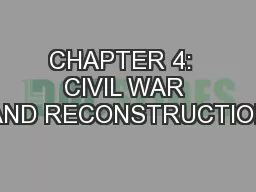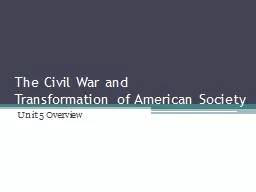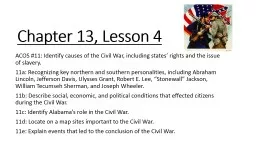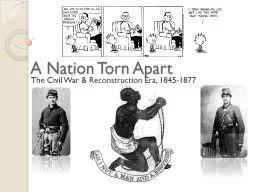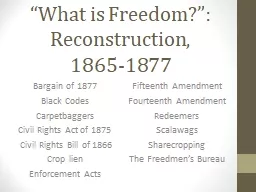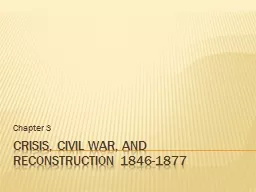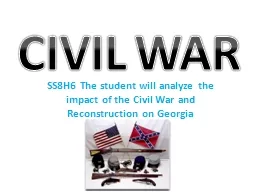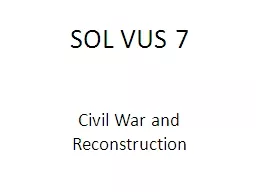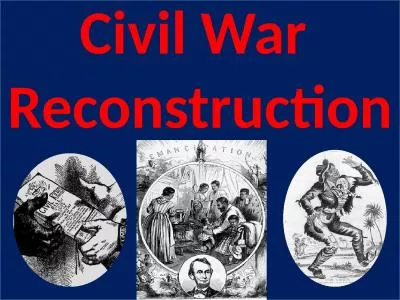PPT-CHAPTER 4: CIVIL WAR AND RECONSTRUCTION
Author : liane-varnes | Published Date : 2018-10-21
ESSENTIAL KNOWLEDGE Conflict over the expansion of slavery into the territories west of the Mississippi River in the 1820s1850s caused tensions to mount between
Presentation Embed Code
Download Presentation
Download Presentation The PPT/PDF document "CHAPTER 4: CIVIL WAR AND RECONSTRUCTION" is the property of its rightful owner. Permission is granted to download and print the materials on this website for personal, non-commercial use only, and to display it on your personal computer provided you do not modify the materials and that you retain all copyright notices contained in the materials. By downloading content from our website, you accept the terms of this agreement.
CHAPTER 4: CIVIL WAR AND RECONSTRUCTION: Transcript
Download Rules Of Document
"CHAPTER 4: CIVIL WAR AND RECONSTRUCTION"The content belongs to its owner. You may download and print it for personal use, without modification, and keep all copyright notices. By downloading, you agree to these terms.
Related Documents

